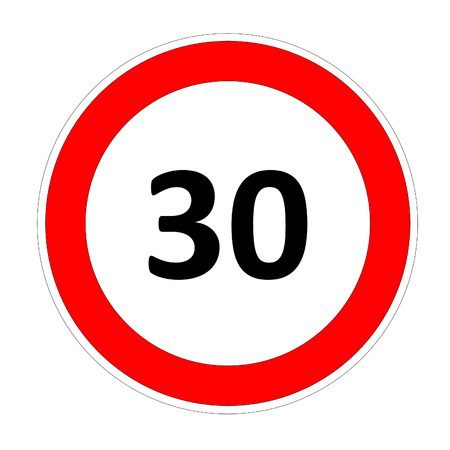 When you think of creating online content, what flashes immediately into mind? Most likely, “blog posts”. But did you know there are at least 30 types of content you can publish online? Disclaimer – you do not need to implement all 30, just use what works for you!
When you think of creating online content, what flashes immediately into mind? Most likely, “blog posts”. But did you know there are at least 30 types of content you can publish online? Disclaimer – you do not need to implement all 30, just use what works for you!
Here they are
- Blog Posts. Blogging is a wonderful opportunity to showcase your knowledge and use your keywords. Google is watching and you should emphasize quality and original content in your posts.
- Infographics. Still a popular trend is to impart information in visual format people can absorb with a single glance. This works so well not so much because many people are visual learners, but because all of us internet-and-mobile age denizens have trained our brains to scan-and-glance digital content, to see if it’s worth spending time exploring further.
- Slide Presentations. Social platforms such as SlideShare and HaikuDeck make it easy for people to share slide presentations. You can create these as stand-alone information modules… or as accessories for webinars you are holding. Plus, you can have people follow you from SlideShare – and share your work across other social networks.
- Media Page. Every online entrepreneur should have a Media Page or a link to a Media Kit on his or her blog or website. Within this tab, the media and other visitors should be able to find:
- Photos they can download (including your headshot and logo)
- Prior media
- Prior Press Releases
- Personal and Company bio information
- Testimonials
- Speaking topics
- Interview style Q&A
- Videos
- The latest news about you/your business
- And anything else you’d like them to share
- Skype Chat Text Interviews. This is a brand new, dynamic and interactive way to present Skype interviews – a live link for people to join in and a blog transcript for those viewing the post after the call has completed.
- Landing or Squeeze Pages. Short pages you send people to so they will sign up – either for your newsletter, a “freebie”, your website or blog – or a paid product.
- Sales Pages. Not-always-longer versions of Landing pages, promoting your paid offer. Sales pages can come in many formats – pick the format that best suits your audience’s engagement style:
- Traditional long letter format
- Short landing page format
- Horizontal
- Vertical
- Video
- Audio
- Podcasts. You can make your website more interactive by providing Podcasts — .MP3 audio files your visitors can listen to (or download, if you let them). They can listen in real-time if you provide a teleseminar phone link – and then enjoy the recording in podcast format on your blog.
- Newsletter Archives. Everyone who owns a blog or website should have a newsletter – and archive old newsletter editions on an Archives page. Newsletters provide an instant history of your business. People can go through each newsletter, from your very first one, and see where you started out – and where you are now. If your newsletters are high enough in value you can even choose to keep them in a hidden section for paid members of your membership site or compile them into an e-book.
- Templates. People will return again and again to your site if they know you have great resources such as templates on your site. These can be blog post templates, review templates – even HTML templates.
- Tip Sheets. This is another desirable type of content to offer as a sign-up incentive on your blog or website. The key is to make it highly specific to their most pressing interest at this time – or to new technology that is affecting their niche: (E.g. “30 Tips For Making the Most of Facebook Changes”).
- Images. We don’t just mean “stick a picture in your blog post”. Images should be an integrated strategy you use to brand your business and tell your story. They should consistently support your online identity and “voice.”
- Animated Gifs. There’s been such a prejudice against “distracting” animations, this is not a method most people think of, when it comes to content creation. Yet under the right circumstances, they can be used effectively.There are two keys to creating a positive rather than a negative effect:
- Choose a “loop” that looks natural repeating (e.g. a candle flame flickering, water gently tossing in a bay), rather than a moment in time endlessly replaying.
- If you just want to catch attention, simply set the animation to repeat only once, as laid out in this Yahoo answer.There are many free sites that allow you to create animated .gifs. Two that are easier than most are Lunapic and Makeagif, with tutorials and wizards respectively.
- Video. Every online entrepreneur should make videos and share them across platforms like YouTube, Pinterest and Vimeo. The real issue is what type of video best supports your business.
- “How to” demonstration
- “Talking head” update from you to your followers
- Animation
- Recorded webinar with slides
- Video blog entry
- Downloadable PDF Files. You can offer eBooks and reports in PDF format as sign-up incentives for subscribing to your blog or website.
- Checklists. Another great sign-up incentive – or bonus. People love checklists – it helps make them feel organized in a world of chronic digital overwhelm!
- Google Hangouts. You can host a meeting, interview or seminar by creating a “Hangout” within your Google+ account. Ask fellow Circle members to join you. Better yet, choose the live streaming option to help it go viral, if it’s something you want everyone to see, and it will automatically be recorded and uploaded to your YouTube channel.
- Logo. A Logo that captures in a blink the essence of your business (and helps people instantly think of it) is essential.
- White Papers. A “white paper” is much like a report, but is usually a formal presentation of statistics or a document analyzing something of great importance to your website visitors. If your target market is corporate-minded, white papers are usually deemed of more value than “reports.”
- About Page. This is one of your best pieces of online real estate. While you are talking about yourself, you are doing so to build identification and rapport with your ideal visitor, so even when talking about yourself, it should really be all about her. Use your top keywords in your About page content. It’s also a great spot to put a headshot or a short video so visitors can really connect with you.
- Bonuses. Bonus downloads and perks add value to your offers, blogs and websites. These can take any format – video, .MP3, tip sheets, reports… They can be created by you… or by a JV partner. Or simply purchased as Master Resale items to share with your list. (Pick the format your target customer or client would love best!)
- Coupons. A coupon can also add value to your offer or website. You can make them printable, if you have a local business… or give a coupon code at checkout to sweeten an offer. Just be sure to set a start and end date (and limit the number), to keep your ROI in the black!
- QR Codes. Are your best-paying customers avid Smartphone users? Then put QR codes on your website, blog, business cards, flyers, merchandise – and more. You can also set this digital bar code to take people straight to:
- A telephone call (your number)
- A text message
- Your website
- A coupon or special offer
- Cartoons. You don’t often see cartoons in digital marketing – but that’s all the more reason to consider using them, if your niche members are highly visual-oriented.
- Statistics. Sharing statistics can be a huge draw for many business niches. You can share them in:
- Chart format
- Graph format
- Tables
- Lists
- FAQ Pages. Having a list of Frequently Asked Questions on your site is a great way to please visitors – and cut down on repetitive emails. A FAQ page is also indispensable in your Affiliate section, if you have affiliates.
- The Legal Stuff. If you are an affiliate marketer, you’ll know you need to provide a Disclaimer or Disclaimer Page, stating that you may receive compensation for recommendations. Other types of “necessaries” like Terms of Service and a Privacy Policy (this one’s a “must” too).
- Maps. Indispensable, if you’re a local business and want people to either visit your premises or see your range of service.
- Reviews. If you are recommending products, use a review template to provide consistent reviews. Your aim should be to become a trusted resource for people in your niche, so that yours is the site they turn to first, when looking for product information.
- “How to” Tutorials. These can be in video, diagram, audio, graphic or written format… or a combination of any of these. (An added bonus: “How-tos” turn your site into a resource.)
There are many more content types you can use on your website – but whichever you choose, be original, unique – and tuned in to your visitors. What kind of content are you using? Please share below.





0 Comments